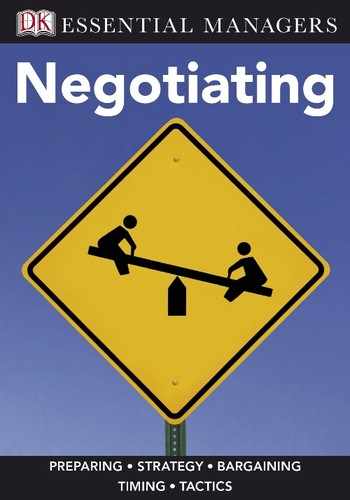Defining Negotiation Styles
Negotiators come to the negotiation table because they have needs that they believe may be fulfilled through negotiations. In order to fulfill these needs, negotiators use different styles and engage in a variety of behaviors that they trust will help them get what they want.
Spotting different approaches
There are three styles of negotiation: distributive, integrative, and mixed motive. Negotiators that use the distributive style view negotiations as a competitive sport, a zero-sum game with a winner and a loser. Such negotiators compete fiercely for the distribution of the outcomes (the size of the pie) and engage in value-claiming behavior[]. They dismiss the value of building relationships and trust as naive, tend to use threats to obtain concessions, and exaggerate the value of the small concessions that they make. They also conceal their needs, do not share information, do not look for possible creative ideas, and even use deceptive tactics. In contrast to value-claiming negotiators, integrative negotiators believe that the size of the pie is not fixed and can be expanded, and that the negotiation process is able to produce a win–win solution. The integrative style of negotiation is designed to integrate the needs of all the negotiators. Negotiators engage in value creation behaviors. They invest in building relationships and nurturing trust, share information openly, and are cooperative, flexible, and creative.
Value-claiming behavior — competitive actions undertaken by a negotiator in an attempt to ensure a win–lose outcome in their favor. Such actions include making excessive demands or threats, concealing interests, and withholding information.Using mixed-motive tactics
The true nature of effective negotiations is often mixed, requiring both cooperative and competitive tactics. The rationale for this is that, through cooperation, negotiators create value; they put money on the table. Following this, once value has been created and the money is on the table, the parties have to split it among themselves. In order to secure the most profitable split, a negotiator has to switch from the cooperative mode to the competitive mode.
Responses to distributive tactics
If the other party is using a distributive win–lose approach, a negotiator who favors the win–win style must protect their own interests. Some respond with the same hard tactics, meeting toughness with toughness. However, since the win–lose negotiation style is most likely to produce sub-optimal outcomes, it is advisable to first try to influence the other party to move toward a more integrative style. Value claimants often think the other party is oblivious to their tactics, and so some negotiators inform the other party tactfully but firmly that they know what they are doing and that it doesn’t contribute to productive negotiations. If all approaches to dealing with value-claiming tactics fail, however, and if they do not require the deal, many negotiators will simply leave the table.
TIP
Utilize all of the negotiation styles—distributive, integrative, and mixed—where appropriate, depending on with whom you are negotiating and what their negotiating style is.
